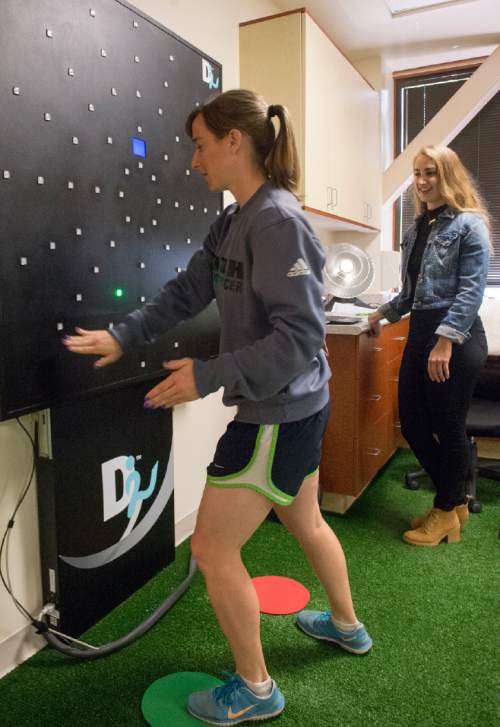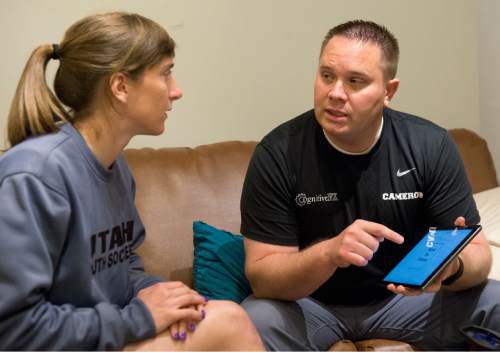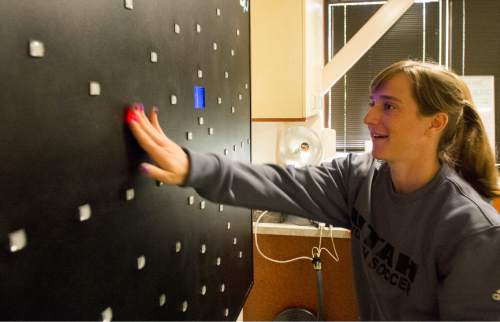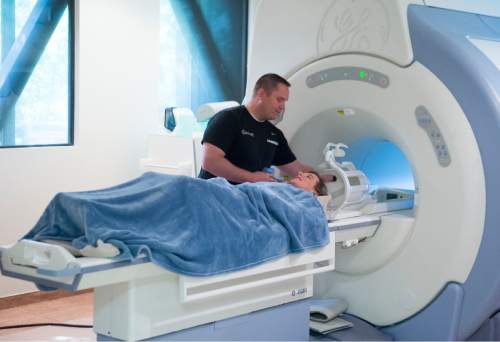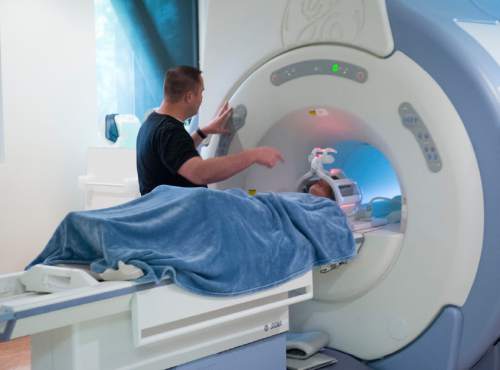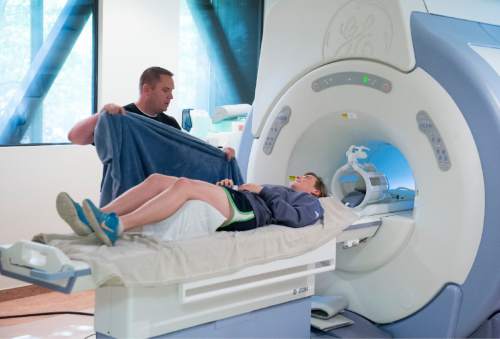This is an archived article that was published on sltrib.com in 2016, and information in the article may be outdated. It is provided only for personal research purposes and may not be reprinted.
She ignored the first concussion.
Molly Poletto was a teenage goalkeeper trying to climb the ranks of the United States' youth soccer program when she dived on the ground to stop a ball and smacked her head.
She shook off most of the others, too, without much thought to the lingering headaches and other symptoms creeping into her daily life. In fact, it wasn't until her eighth concussion, suffered while a freshman at the University of Utah, that her coaches told her she would have to give up playing the game she loved.
"It was heartbreaking," she said.
The worst, however, was yet to come.
Poletto's headaches persisted and her cognitive skills diminished, sending her on a yearslong search for relief. The 23-year-old hopes her most recent medical stop will give her that.
The Provo-based Cognitive FX has provided care for numerous athletes and other patients dealing with lingering symptoms from concussions, and doctors there believe their rigorous rehabilitation program is on the cutting edge of treatment.
The clinic — one of many in the region searching for better ways to address concussions amid rising concerns over head trauma in sports — relies on MRI scans of the brain to assess function and pinpoint areas of concern before having patients embark on an intensive, week-long therapy program that promotes rigorous mental activity over the traditional approach of rest and relaxation.
"You can do paper-and-pencil testing and you can assume what's going on in the brain based on their performance, but you never really know," said Mark Allen, a researcher and one of the clinic's patterns. "The scan provides a road map for the treatment."
The clinic counts among its clients NHL star Sidney Crosby and NFL athletes Tom Brady, Troy Polamalu, Jeff Saturday, Heath Miller and Austin Collie.
"I was looking for something that they were doing," said Collie, the former BYU star who suffered multiple concussions during his playing career. "The mindset that you can rehabilitate your brain — I wanted there to be something that I could do to help instead of just sit there and wait for symptoms to pass."
Collie, who has seen treatment at various levels, now works with the clinic and continues to recommend the program to his former teammates and friends in NFL circles.
"It's very cutting edge," he said. "There's really nowhere that's doing this."
But while the small clinic claims high rates of success, the program has its detractors and skeptics as it seeks more mainstream acceptance. Allen has published some of his own findings related to the clinic, but there has been no third-party research or double-blind studies to help assess what, if any, long-term benefits exist.
"We take a lot of flack because what we do can seem like snake oil unless you come and take a look at it," said Allen, who is preparing to submit the clinic's most significant research paper next month for peer review. "Because really the treatments that we do aren't wacky. It's just the optimal combination of all the things that everybody thinks is the best thing to do."
For a majority, concussion symptoms will dissipate on their own over time with rest. For others, the symptoms may last several weeks or longer.
"There definitely gets to a point where recommending rest isn't necessarily helpful," said Colby Hansen, a University of Utah doctor who specializes in brain trauma and concussion management. "Trying to get people back active into what their routines are and what their life is is important."
At the University hospital, Hansen might employ a mix of vision, speech and cognitive therapy to help rehabilitate a patient.
"It could take on multiple flavors as far as what the rehabilitation looks like," he said. "… Without knowing all the ins and outs of Cognitive FX, I think they're trying to adapt a lot of those similar principles."
On a recent day, Poletto was put through nearly a dozen sessions of various forms of therapy. In one of them, the 23-year-old Utah goalkeepers coach was put through a series of high-speed tests in which she tracked lights on a board, racing to push them as she rattled off answers to math problems or listed items she might find at the beach, one for each letter of the alphabet.
"It's like Dance Dance Revolution," she said. "On steroids."
Allen and his partner, neuropsychologist Alina Fong, say their own findings over the two-year life of the clinic are hopeful that the long-term benefits are real.
"It really doesn't surprise me. By its very nature it's a temporary disruption of brain function. It's something that can be rehabbed," Allen said, likening it to a ligament tear in the knee. "If you go to a good physical therapist, they help you get rid of that limp. Then there's no reason you should go back to limping unless you get re-injured."
The issues of multiple trauma and chronic traumatic encephalopathy (CTE), however, are another matter entirely, they said.
"We have objective finds that show us how the brain is functioning," Fong said. "There have been times I haven't been positive about a patient going back, but ultimately it is that player's choice. The way we look at it is it's our job to provide that player with the most information, the most knowledge, the most comprehensive understanding of their injury so they can make the most educated decision."
"Our preference would be they never go back and get another hit," Allen added. "We never want to claim that we are making players so they can go out and get all the hits they want and come back and we'll fix them up."
But the clinic — at a price of $7,900 — often finds itself dealing with the desperate, patients injured in car crashes or other accidents who still suffer from the effects.
"I was extremely skeptical," said 23-year-old Christian Gomez, who went through the clinic's weeklong program last September. "I thought there was nothing that could help me."
Gomez had suffered multiple concussions while playing high school football. But after accidentally being kicked in the head during a pickup basketball game, the Herriman man struggled with constant headaches, speech problems, memory loss and depression, causing him to quit his job and drop out of school.
Gomez left each day of his therapy in Provo feeling exhausted.
"Basically, they shock your brain into working again," he said. "They're constantly making you do activities to stimulate different parts of your brain."
Nine months later, Gomez said he feels "like the person I was before the concussion" and his results will be among those included in the study Allen and Fong plan to submit for publication in July.
"If this technology and protocol works, with the number of people who have suffered multiple concussions and need help, it really holds some exciting promise," said Gomez's father, Jess Gomez, a healthcare communications professional in Salt Lake. "But it's going to have to be based on the data."
Without third-party research to verify its efficacy and with a large out-of-pocket expense attached to the treatment, outside medical experts have expressed some skepticism. But doctors are monitoring the clinic's work with interest.
After years of neglecting her concussion symptoms, Poletto said, her life had become difficult to manage. The only exercise she could manage was walking on a treadmill at a slight incline. She suffered from what she characterized as "glitches" of the mind.
"Mid-sentence, I would just stop talking and go onto something else, not realizing I hadn't finished the thought," she said. "I couldn't read a paragraph without getting a headache."
Poletto now hopes she's on a road to recovery, though time will tell.
"I feel sharper, but I also feel like I still have room to improve and that makes me excited," she said a couple weeks after completing her weeklong therapy. "It's great if it helps for a little while, but it's huge if it lasts for the long term."
afalk@sltrib.com Twitter: @aaronfalk


